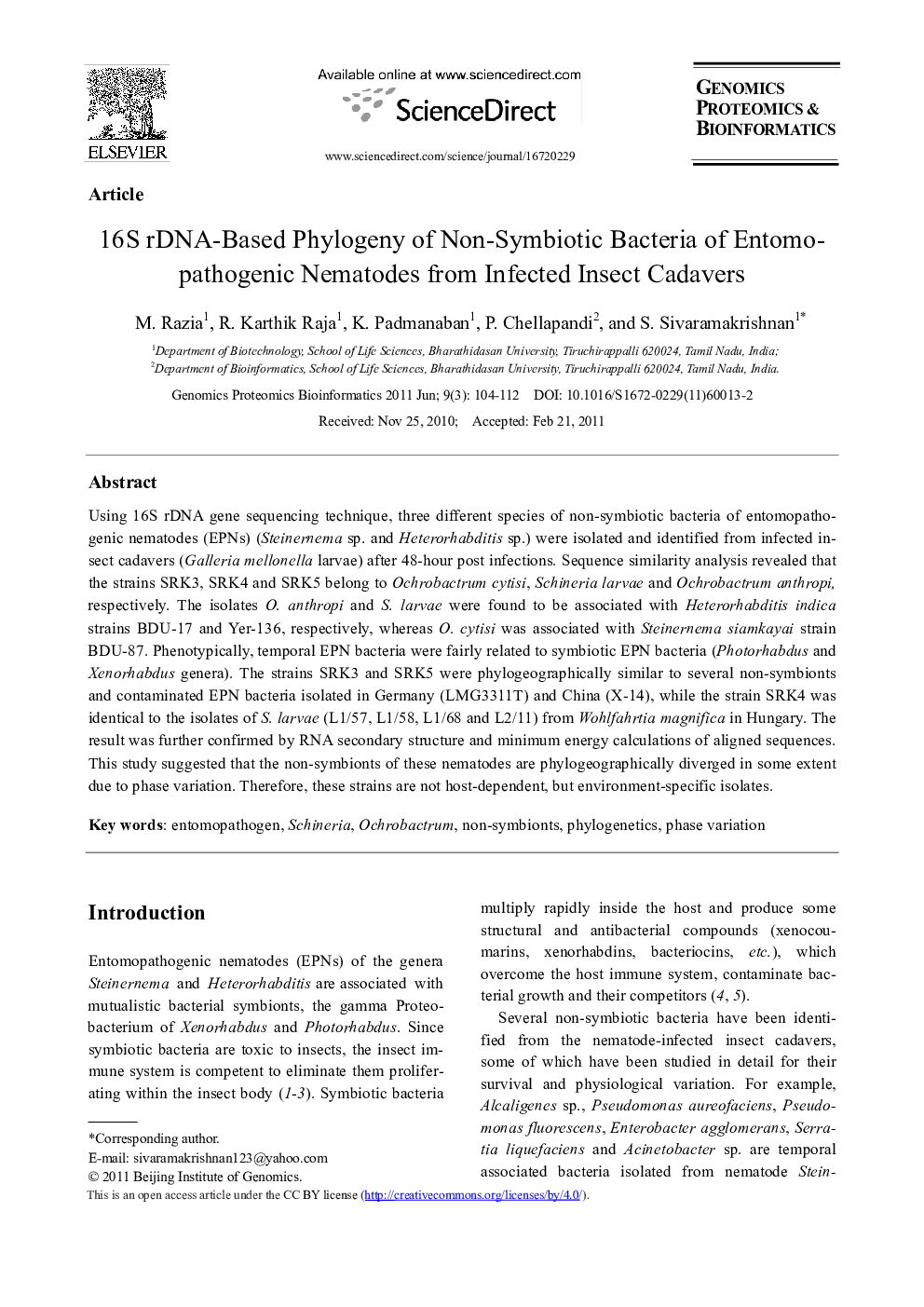| Article ID | Journal | Published Year | Pages | File Type |
|---|---|---|---|---|
| 2822634 | Genomics, Proteomics & Bioinformatics | 2011 | 9 Pages |
Using 16S rDNA gene sequencing technique, three different species of non-symbiotic bacteria of entomopathogenic nematodes (EPNs) (Steinernema sp. and Heterorhabditis sp.) were isolated and identified from infected insect cadavers (Galleria mellonella larvae) after 48-hour post infections. Sequence similarity analysis revealed that the strains SRK3, SRK4 and SRK5 belong to Ochrobactrum cytisi, Schineria larvae and Ochrobactrum anthropi, respectively. The isolates O. anthropi and S. larvae were found to be associated with Heterorhabditis indica strains BDU-17 and Yer-136, respectively, whereas O. cytisi was associated with Steinernema siamkayai strain BDU-87. Phenotypically, temporal EPN bacteria were fairly related to symbiotic EPN bacteria (Photorhabdus and Xenorhabdus genera). The strains SRK3 and SRK5 were phylogeographically similar to several non-symbionts and contaminated EPN bacteria isolated in Germany (LMG3311T) and China (X-14), while the strain SRK4 was identical to the isolates of S. larvae (L1/57, L1/58, L1/68 and L2/11) from Wohlfahrtia magnifica in Hungary. The result was further confirmed by RNA secondary structure and minimum energy calculations of aligned sequences. This study suggested that the non-symbionts of these nematodes are phylogeographically diverged in some extent due to phase variation. Therefore, these strains are not host-dependent, but environment-specific isolates.
